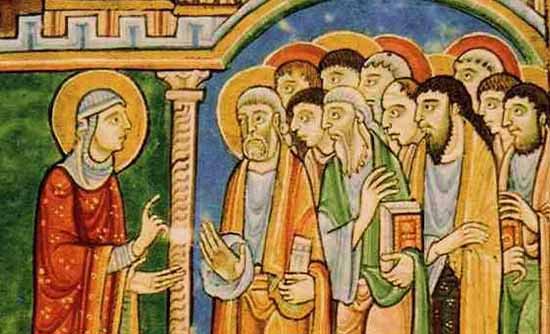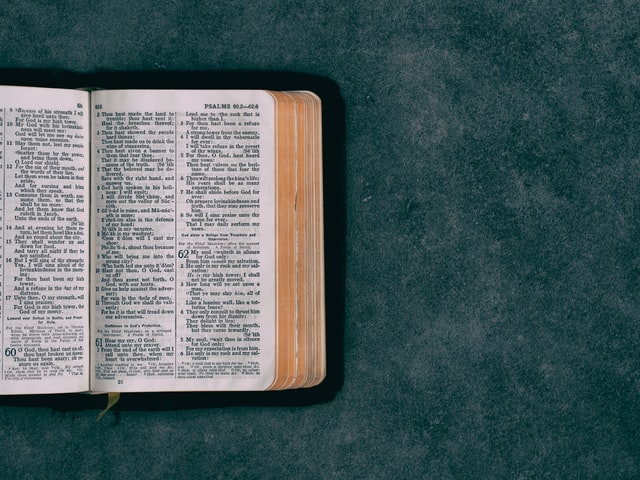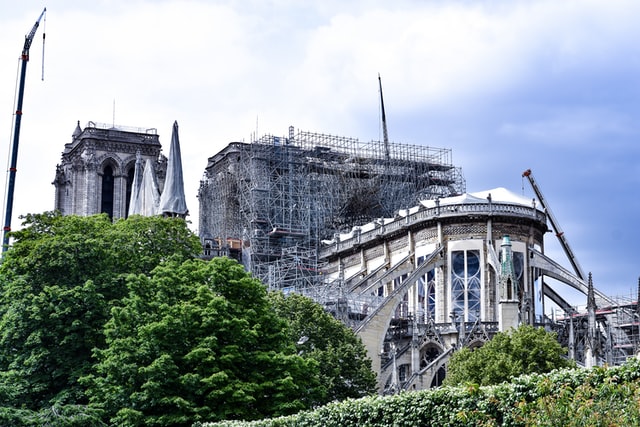Gone Girl: Disappearing Women from “The Easter Hymn”
I bet that, for those of you attending church on Easter Sunday, at least half of you will sing “Christ the Lord is Risen Today.”
Christ, the Lord, is risen today, Alleluia! Sons of men and angels say, Alleluia! Raise your joys and triumphs high, Alleluia! Sing, ye heavens, and earth, reply, Alleluia!
Vain the stone, the watch, the seal; Alleluia! Christ has burst the gates of hell: Alleluia! Death in vain forbids his rise; Alleluia! Christ has opened paradise. Alleluia!
Lives again our glorious King; Alleluia! Where, O death, is now thy sting? Alleluia! Once he died, our souls to save; Alleluia! Where thy victory, O grave? Alleluia!
Soar we now where Christ has led, Alleluia! Foll’wing our exalted Head; Alleluia! Made like him, like him we rise: Alleluia! Ours the cross, the grave, the skies. Alleluia!
Hail, the Lord of earth and heavn’n! Alleluia! Praise to thee by both be giv’n; Alleluia! Thee we greet triumphant now; Alleluia! Hail, the Resurrection, thou! Alleluia!
This hymn was composed in 1739 by Charles Wesley, according to Hymnary.org (“the most complete database of North American hymnody on the planet”). A version of it first appeared as Hymn 716 “Hymn for Easter Day” in John Wesley’s 1780 hymnbook A Collection of Hymns for the Use of People Called Methodists.
This is true.
But it is only some of the story. This famous Easter hymn has roots far deeper than 1739. It also once had a different focus.
Wesley’s 1739 hymn is a version of a medieval hymn:”Jesus Christ is Risen Today” or “Surrexit Christus hodie.” And, rather different from its modern manifestations, the medieval hymn highlighted women.
As the 1478 text sings (I give the English):
Surrexit Christus hodie.
Christ is risen today for the comfort of all people.
He suffered death yesterday. He suffered for us all.
Women to the tomb bring spices as gifts,
See a white angel announcing joy.
Women O trembling into Galilee proceed,
To disciples they declare, that the king of glory is risen.
In this Paschal joy bless the Lord.
Praise the Holy Trinity. We give thanks to God.
Women, as I recently wrote in Fides et Historia, play a central role in this medieval praise song. They are the ones who first discover the resurrection of Christ, who learn the meaning of the empty tomb from the angel, who witness to the disciples, and who–consequently–spread knowledge of “this Paschal joy.” Indeed, it is these women who bring the transformative good news about Christ’s resurrection to the leaders of the early church.
In 1708 revised stanzas from “Surrexit Christus hodie” were printed in the Lyra Davidica: A Collection of Hymns and Spiritual Songs. The stanzas were much more singable (at least according to our modern standards), but still clearly rooted in the fifteenth-century song.
“Christ the Lord is Risen Today” from the 1895 Junior Hymnal (Central Libraries Special Collections, Baylor University)
Jesus Christ is risen to day, Halle-Halleluiah Our triumphant Holyday, Halle-Halleluiah. Who so lately on the Cross, Halle-Halleluiah. Suffer’d to redeem our loss. Halle-Halleluiah.
Hast ye Females from your Fright, Halle-Halleluiah. &c. Take to Galile your Flight: Halle-Halleluiah. To his sad Disciples say, Halle-Halleluiah. Jesus Christ is Risen to Day. Halle-Halleluiah.
In our Paschal Joy and Feast. Halle-Halleluiah. Let the Lord of Life be blest, Halle-Halleluiah. Let the Holy Trine be prais’d, Halle-Halleluiah. And thankful Hearts to Heaven be rais’d. Halle-Halleluiah.
Like the medieval song, this 1708 version heralded the women at the tomb as “as apostle(s) to the apostles”–the medieval name for Mary Magdalene who first brought the resurrection news–“To his sad Disciples say…Jesus Christ is Risen to Day”.
Another version of the hymn was written shortly after, in 1749, by John Arnold. Although it kept the first stanza of the 1708 hymn virtually the same, it replaced the second and third stanzas with completely different text.
Jesus Christ is risen today, Alleluia! Our triumphant holy day, Alleluia! Who did once upon the cross, Alleluia! Suffer to redeem our loss. Alleluia!
Hymns of praise then let us sing, Alleluia! Unto Christ, our heavenly King, Alleluia! Who endured the cross and grave, Alleluia! Sinners to redeem and save. Alleuia!
But the pains which He endured, Alleluia! Our salvation hath procured. Alleluia! Now about the sky he’s King, Alleluia! Where the angels ever sing. Alleluia!
It is this version of the hymn which exploded in popularity–versions of it appearing in almost every hymnal published between 1775 and 1800. Perhaps the most famous variation (which became its own separate song) was penned by Charles Wesley as “Christ the Lord is Risen Today” and has been printed in more than 1000 hymnals.
So did you see what just happened? If you missed it, go back and compare the 1708 text with the 1749 text.
The 1478 and 1708 lyrics highlight women as the first witnesses of the resurrection and messengers to the apostles. After 1708, however, the women simply disappear. Where once women pervaded the hymn, even driving the direction of the narrative, they are gone–completely gone–by 1749.
Why did these women disappear?
Well, I don’t know for sure. But I do know that the Lyra Davidica intentionally called the women at the tomb the “Sacred Embassy” and included the female-friendly version of “Jesus Christ is Risen Today” to emphasize women as prophets and preachers. The editor of the text, Richard Roach, was a member of the Philadelphian Society which advocated female preaching. Roach wanted to raise awareness about how God worked through women. As Sarah Apetrei wrote in her Women, Feminism and Religion in Early Enlightenment England: “the hymn’s emphasis on the role of women in proclaiming the resurrection must have appealed to Roach. Indeed, the editor of the collection added a meditation, to be sung to the same tune, on Mary’s encounter with the angel at the empty tomb. The angel charges her to preach to the disciples, describing her as a ‘Sacred Embassy’: an unusual expression which Roach commonly used to refer to female prophets” (205).
Of course, just because Richard Roach intentionally included the women at the tomb in “Jesus Christ is Risen Today” to highlight women’s spiritual authority doesn’t necessarily mean that verses about women were intentionally excluded to obscure women’s spiritual authority….
Or does it?
Just something to think about…….
For full citations, please see my article, “What did the Reformation Mean for Women?” in Fides et Historia: Journal of the Conference on Faith and History 48:2, 80-88.




